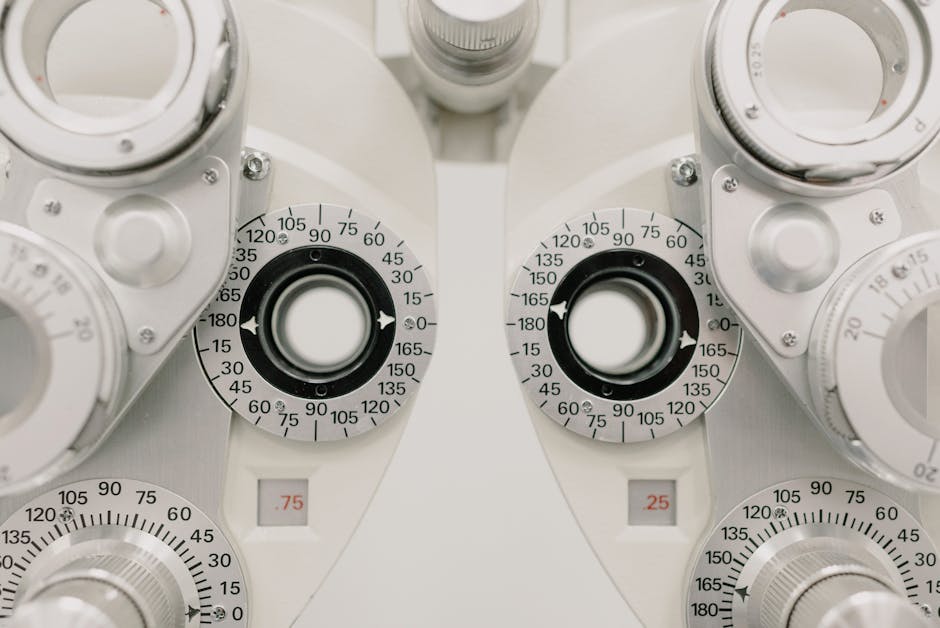How AI Is Revolutionising Healthcare: Opportunities for Small Practises
As a small practise, you’re poised to benefit from AI-driven innovations in healthcare. AI-powered EHRs streamline data management, automate administrative tasks, and enhance diagnostic accuracy. Personalised medicine and predictive analytics enable targeted interventions and improved patient outcomes. To stay ahead, focus on Change Management, educate staff on AI benefits and limitations, and consider partnering with larger organisations to overcome financial constraints. As you explore AI’s potential, you’ll discover opportunities to optimise workflows, reduce costs, and enhance patient care. By embracing AI, you can revolutionise your practise and stay competitive in a rapidly evolving healthcare landscape – and that’s just the beginning.
Key Takeaways
• AI-powered EHRs improve data management, standardising formats and enabling seamless data exchange between healthcare systems.• Automation and workflow optimisation redirect resources to high-priority tasks, reducing errors and increasing operational efficiency.• AI-assisted image analysis enhances diagnostic accuracy, detecting abnormalities and diagnosing diseases more accurately and efficiently.• Personalised medicine is revolutionised through AI-powered genetic profiling, predicting patient responses to medications and reducing healthcare costs.• AI-driven data visualisation tools present insights in an easily digestible format, enabling informed decision-making and improved patient care.
AI-Powered Electronic Health Records

As you explore the potential of AI in healthcare, you’ll find that AI-powered electronic health records (EHRs) are revolutionising the way medical information is stored and shared.
By leveraging machine learning algorithms, AI-powered EHRs can automatically extract relevant clinical information from unstructured data, such as medical notes and radiology reports, and populate the relevant fields in a patient’s EHR. This automation enables healthcare providers to access accurate and up-to-date patient information, facilitating informed decision-making and improved patient care.
Data standardisation plays a vital role in ensuring seamless data exchange between different healthcare systems.
AI-powered EHRs can help achieve data standardisation by normalising data formats, terminology, and structures, enabling effortless sharing of patient information across healthcare networks. This standardisation also facilitates record interoperability, allowing healthcare providers to access and share patient records across different systems and locations.
With AI-powered EHRs, healthcare providers can break down data silos and create a unified view of patient information.
Automating Administrative Tasks Efficiently

By automating administrative tasks, you can redirect valuable resources to high-priority tasks, such as patient care and research, while reducing the likelihood of human error and increasing overall operational efficiency.
This is especially vital for small practises, where resources are often limited. By leveraging AI-powered automation, you can streamline tasks such as billing, claims processing, and data entry, freeing up staff to focus on more critical activities.
Effective staff management is key to maximising the benefits of automation. By delegating tasks efficiently, you can facilitate that your team is working at full capacity.
AI can help identify areas where automation can have the greatest impact, allowing you to allocate staff resources more effectively. For instance, AI-powered chatbots can handle routine patient enquiries, freeing up staff to focus on more complex issues.
Task delegation is also simplified with AI-powered automation. By automating routine tasks, you can delegate more complex tasks to staff, allowing them to focus on higher-value tasks that require human expertise.
This not only improves operational efficiency but also enhances job satisfaction and reduces burnout. By automating administrative tasks efficiently, you can tap the full potential of your staff, leading to improved patient outcomes and a more sustainable practise.
Enhancing Diagnostic Accuracy Rates

As you explore the role of AI in enhancing diagnostic accuracy rates, you’ll discover that AI-assisted image analysis can substantially improve the detection of abnormalities.
You’ll also find that predictive analytics tools can help identify high-risk patients and enable early interventions.
AI-Assisted Image Analysis
You can substantially enhance diagnostic accuracy rates by leveraging AI-assisted image analysis, which enables healthcare professionals to detect abnormalities and diagnose diseases more accurately and efficiently. This technology has revolutionised the field of radiology, allowing for more precise diagnoses and improved patient outcomes.
| Benefits | Description |
|---|---|
| Improved Image Quality | AI algorithms can enhance image quality, reducing noise and artefacts, and improving diagnostic confidence. |
| Enhanced Radiology Innovation | AI-assisted image analysis enables radiologists to focus on high-value tasks, such as interpreting complex cases, while AI handles routine tasks. |
| Increased Efficiency | AI can analyse images rapidly, freeing up radiologists to focus on more critical tasks and reducing turnaround times. |
Predictive Analytics Tools
Leveraging predictive analytics tools, healthcare professionals can substantially enhance diagnostic accuracy rates by identifying high-risk patients, detecting potential health anomalies, and streamlining clinical decision-making processes.
By analysing large datasets, you can pinpoint patterns and correlations that may not be immediately apparent to human clinicians. This enables you to implement targeted interventions and preventive measures, reducing the likelihood of misdiagnosis or delayed diagnosis.
Predictive analytics tools also facilitate risk stratification, allowing you to categorise patients based on their individual risk profiles.
This enables more effective resource allocation, ensuring that high-risk patients receive timely and targeted care. Clinical dashboards provide a centralised platform for tracking patient data, enabling you to monitor essential signs, lab results, and medication regimens in real-time.
Real-Time Data Insights
Real-time data insights equip clinicians with instantaneous access to critical patient information, enabling them to make informed decisions and enhance diagnostic accuracy rates.
You can now leverage advanced healthcare analytics to extract valuable insights from vast amounts of data. This allows you to identify patterns, trends, and correlations that might’ve gone unnoticed otherwise.
By leveraging real-time data insights, you can:
-
Improve diagnostic accuracy: With instant access to patient data, you can make more accurate diagnoses and reduce the risk of misdiagnosis.
-
Enhance patient care: Real-time data insights enable you to respond promptly to changes in patient conditions, ensuring timely interventions and improved patient outcomes.
-
Streamline clinical workflows: By automating data analysis and visualisation, you can reduce administrative burdens and focus on high-value tasks.
Through advanced data visualisation techniques, you can transform complex data into actionable insights, empowering you to make data-driven decisions that improve patient care and drive better health outcomes.
Personalised Medicine Through AI

AI-powered algorithms analyse genomic data to create tailored treatment plans, revolutionising the field of personalised medicine. You’re now able to receive customised care based on your unique genetic makeup.
This is made possible through genetic profiling, which involves analysing your genetic data to identify specific genetic markers that affect your response to certain medications. With this information, healthcare providers can create personalised treatment plans that minimise side effects and maximise efficacy.
Medication tailoring is another area where AI is making a significant impact. By analysing your genetic profile, AI algorithms can predict how you’ll respond to different medications, allowing your healthcare provider to prescribe the most effective treatment. This approach reduces the risk of adverse reactions and guarantees you receive the best possible care.
The benefits of personalised medicine extend beyond treatment plans. You’ll experience reduced healthcare costs due to fewer trial-and-error prescriptions and reduced hospital readmissions. Additionally, AI-driven personalised medicine enables healthcare providers to identify high-risk patients and take proactive measures to prevent illnesses.
As AI continues to evolve, you can expect even more precise and effective personalised medicine. With the ability to analyse vast amounts of genomic data, AI algorithms will become increasingly sophisticated, leading to even more accurate diagnoses and treatment plans. The future of personalised medicine is bright, and AI is at the forefront of this revolution.
Streamlining Clinical Workflows

As you explore the potential of AI in healthcare, you’ll find that streamlining clinical workflows is a vital aspect of improving patient care.
By automating task management, you can reduce the administrative burden on healthcare professionals, freeing them up to focus on more critical tasks.
Meanwhile, efficient data processing enables you to make more accurate diagnoses and develop targeted treatment plans.
Automated Task Management
By automating routine administrative tasks, healthcare professionals can refocus their attention on high-value tasks that require human expertise and empathy. This is where automated task management comes in, streamlining clinical workflows and freeing up valuable time for more critical tasks.
With AI-powered automation, you can optimise your workflow, prioritising tasks and allocating resources more efficiently.
Some benefits of automated task management include:
Task Prioritisation: AI can analyse your workload and prioritise tasks based on urgency and importance, ensuring you’re focussing on the most critical tasks first.
Workflow Optimisation: Automated workflows can identify bottlenecks and inefficiencies, allowing you to refine your processes and reduce waste.
Enhanced Productivity: By automating routine tasks, you can redirect your attention to high-value activities that drive better patient outcomes and improve your practise’s overall productivity.
Efficient Data Processing
You can substantially reduce the time spent on data processing by leveraging AI-driven technologies that rapidly extract insights from large datasets, allowing you to streamline clinical workflows and make data-driven decisions.
This is particularly important in small practises where resources are limited, and every minute counts. By automating data processing, you can refocus your attention on high-value tasks that require a human touch.
AI-powered data visualisation tools can help you make sense of complex data sets, presenting insights in an easily digestible format.
This enables you to identify trends, patterns, and correlations that might’ve gone unnoticed otherwise. Additionally, AI-driven information architecture can help you organise and structure your data in a way that makes it easily accessible and actionable.
This, in turn, enables you to make more informed decisions, improve patient outcomes, and enhance the overall quality of care. By leveraging AI-driven data processing, you can tap into new efficiencies, reduce costs, and drive better health outcomes.
AI-Driven Patient Engagement Tools

What role can AI-driven patient engagement tools play in revolutionising healthcare outcomes by fostering personalised, real-time interactions between patients and providers?
As a healthcare provider, you’re likely aware of the importance of patient engagement in achieving better health outcomes. AI-driven patient engagement tools can help you take this to the next level.
These tools use machine learning algorithms to analyse patient data, identify patterns, and tailor interactions to individual patients’ needs. This can lead to improved patient adherence, better health outcomes, and enhanced patient satisfaction.
Some examples of AI-driven patient engagement tools include:
Virtual CoachingAI-powered virtual coaches can offer personalised guidance and support to patients, helping them manage chronic conditions, adhere to medication regimens, and adopt healthy behaviours.
Personalised MessagingAI-driven messaging platforms can send targeted, tailored messages to patients, reminding them of appointments, providing medication reminders, and offering educational resources.
Patient ProfilingAI algorithms can analyse patient data to create detailed profiles, enabling healthcare providers to identify high-risk patients, anticipate potential health issues, and provide targeted interventions.
Predictive Analytics for Better Care

Leveraging AI-driven patient engagement tools is just the beginning – now, healthcare providers can take predictive analytics to the next level, uncovering hidden patterns in patient data to forecast health outcomes and intervene proactively.
By applying predictive analytics, you can identify high-risk patients and develop targeted interventions to prevent hospital readmissions, reduce healthcare costs, and improve patient outcomes.
With predictive analytics, you can analyse large amounts of patient data, including electronic health records, claims data, and social determinants of health.
This enables you to identify patterns and correlations that may not be apparent through traditional analysis methods.
For instance, you can use predictive modelling to identify patients at high risk of hospitalisation, allowing you to proactively coordinate care and prevent unnecessary hospitalisations.
Effective care coordination is critical in preventing hospital readmissions, and predictive analytics can help you evaluate risk factors, such as medication non-adherence, social isolation, and chronic conditions, to develop personalised care plans that address these factors.
Additionally, predictive analytics can help you identify patient populations that require additional support, enabling you to allocate resources more efficiently.
Improving Patient Outcome Analysis

By integrating AI-driven predictive modelling into patient outcome analysis, healthcare providers can drill down to specific factors influencing treatment efficacy, such as medication response rates and patient adherence, to refine care strategies and enhance patient outcomes.
This enables you to identify high-risk patients and develop targeted interventions to mitigate potential complications.
With AI-powered patient outcome analysis, you can uncover hidden patterns and correlations in large datasets, leading to more accurate risk assessments and improved clinical insights.
This, in turn, allows you to:
Develop personalised treatment plans tailored to individual patient needs
Optimise resource allocation and reduce healthcare costs
Enhance patient engagement and education through data-driven insights
AI-Assisted Medical Imaging Analysis

As you explore the potential of AI in medical imaging analysis, you’ll discover how AI algorithms can enhance diagnostic accuracy, automate image processing, and pave the way for personalised treatment plans.
By leveraging machine learning and computer vision, AI-assisted medical imaging can help clinicians identify patterns and anomalies with unprecedented precision.
This, in turn, can lead to more accurate diagnoses, improved patient outcomes, and more targeted treatments.
Enhanced Diagnostic Accuracy
You’ll likely encounter AI-assisted medical imaging analysis in various healthcare settings, where it’s increasingly being used to enhance diagnostic accuracy by identifying patterns and anomalies in medical images with unprecedented precision.
This technology is revolutionising the way clinicians make clinical decisions, enabling them to provide more accurate and timely diagnoses.
By leveraging machine learning algorithms, AI-assisted medical imaging analysis can detect subtle patterns and anomalies that may be imperceptible to the human eye.
Some benefits of AI-assisted medical imaging analysis include:
-
Improved diagnostic confidence: AI algorithms can analyse medical images more accurately and consistently than humans, reducing the likelihood of misdiagnosis.
-
Enhanced clinical decision-making: AI-assisted analysis provides clinicians with more accurate and detailed information, enabling them to make more informed clinical decisions.
-
Intelligent diagnosis: AI algorithms can identify patterns and anomalies that may not be apparent to human clinicians, facilitating more accurate and timely diagnoses.
Automated Image Processing
Automated image processing plays a vital role in AI-assisted medical imaging analysis, as it enables the efficient and accurate extraction of relevant information from medical images.
As a healthcare professional, you’re likely familiar with the importance of medical imaging in diagnosis and treatment.
With AI-driven automated image processing, you can now analyse medical images with unprecedented speed and accuracy. This technology enables the rapid detection of abnormalities, such as tumours or fractures, and facilitates the creation of detailed 3D models for medical visualisation.
Image segmentation, a critical component of automated image processing, allows for the precise isolation of specific features within an image, enabling targeted analysis and diagnosis.
By leveraging AI-assisted medical imaging analysis, you can improve diagnostic accuracy, reduce errors, and enhance patient outcomes. In addition, automated image processing can help streamline your workflow, freeing up time for more critical tasks.
Personalised Treatment Plans
Your personalised treatment plans can now be tailored to individual patients’ needs through AI-assisted medical imaging analysis, which provides precise diagnostic insights and enables data-driven treatment strategies.
This approach empowers you to create customised therapies that address specific patient needs, leading to more effective outcomes.
With AI-assisted analysis, you can:
-
Analyse genetic profiling to identify genetic markers that influence treatment response, enabling targeted therapies.
-
Detect subtle patterns in medical images, allowing for earlier disease detection and more accurate diagnosis.
-
Develop data-driven treatment plans that consider a patient’s unique characteristics, medical history, and treatment response.
Overcoming Barriers to AI Adoption

As you consider integrating AI into your small practise, acknowledge the barriers that stand in the way of widespread adoption.
Despite the potential of AI to revolutionise healthcare, several obstacles hinder its widespread adoption, including high implementation costs, lack of standardisation, and concerns about data privacy and security.
To overcome these barriers, you’ll need to focus on Change Management. This involves evaluating your current workflows and identifying areas where AI can augment your practise.
A Cultural Shift is also necessary, as you’ll need to educate your staff on the benefits and limitations of AI. This might require significant training and resources, which can be a challenge, especially for small practises with Financial Constraints.
However, the payoff can be significant. By adopting AI, you can improve patient outcomes, reduce costs, and enhance the overall efficiency of your practise.
To overcome the financial hurdles, consider partnering with larger healthcare organisations or technology companies that can provide access to AI expertise and resources.
Additionally, look into government grants and incentives that support the adoption of AI in healthcare.
Conclusion
As you navigate the transformative power of AI in healthcare, you’re likely wondering: can small practises truly harness this technology to elevate patient care?
The answer lies in embracing AI’s potential to streamline clinical workflows, enhance diagnostic accuracy, and personalise treatment plans.
By doing so, you’ll not only improve patient outcomes but also stay competitive in an ever-evolving healthcare landscape.
Will you be at the forefront of this revolution, or will you be left behind?
Contact us to discuss our services now!
